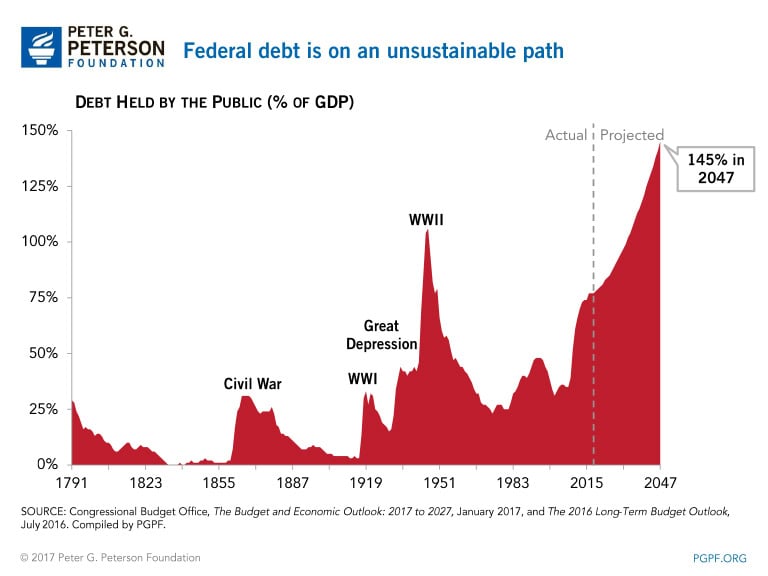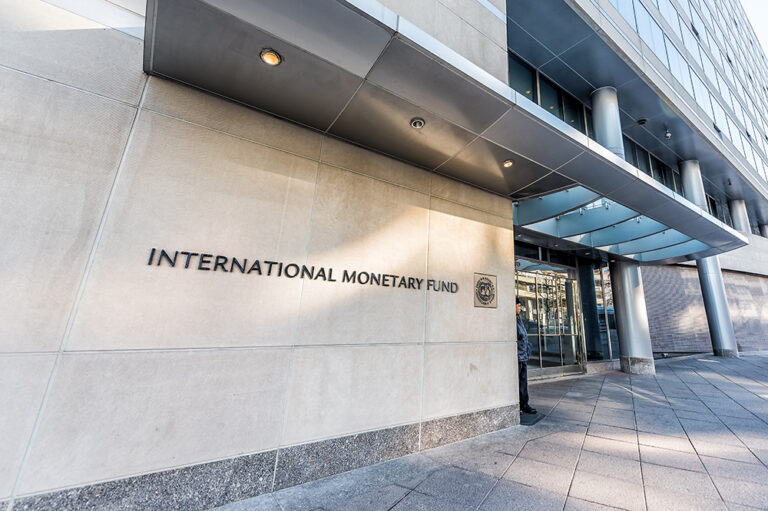As a new president and Congress get to work on their policy priorities for 2017, there is one issue that affects all others: the nation’s unsustainable long-term fiscal outlook. Yesterday, the nonpartisan Congressional Budget Office (CBO) released its latest budget projections, outlining the fact that we’re still on a dangerous path that threatens our economic future. CBO’s new report serves as a reminder that the lawmakers need to take into account our nation’s long-term fiscal challenges as they consider policy changes.
Here are the top three takeaways from our analysis of the report:
1. Deficits will reach $1 trillion by 2023 and total $9.4 trillion over the next ten years. These deficits stem from a structural mismatch between spending and revenues: Over the next ten years, CBO projects that revenues will grow by $1.7 trillion, while spending will grow by $2.6 trillion.

2. The national debt will climb significantly over the next ten years, reaching 89 percent of gross domestic product (GDP) in 2027 — more than double the 50-year historical average of approximately 40 percent.

3. Interest costs on the debt will rise sharply. Over the next ten years, net interest will total $5.2 trillion. As debt continues to accumulate and interest rates increase, net interest costs are projected to more than double over the decade.

“The long-term imbalance between revenues and spending must be taken into account as lawmakers look to address major policy areas, including healthcare and tax reform,” Michael A. Peterson, President and CEO of the Peter G. Peterson Foundation, said in a statement on the CBO report. “These reforms should improve our fiscal outlook in the decades ahead, by stabilizing our debt as a share of the economy.”
Read our full analysis of the CBO report or learn more about the country’s fiscal and economic challenges.
Photo by Chip Somodevilla/Getty Images
Further Reading
House Reconciliation Bill Would Add Trillions to the National Debt
The bill would increase debt by $3.0 trillion over the next 10 years, driving it from nearly 100 percent of GDP now to 124 percent of GDP by 2034.
House Reconciliation Bill Would Increase the National Debt by More Than Any Other Recent Legislation
The House recently passed the largest reconciliation bill ever. CBO estimates it would add $2.4 trillion (excluding interest) to the national debt over 10 years.
United States Is Borrowing at a Higher Rate than the Global Average, Warns IMF
New IMF reports serve as a warning to all countries that global fiscal and economic conditions are veering into dangerous territory.


